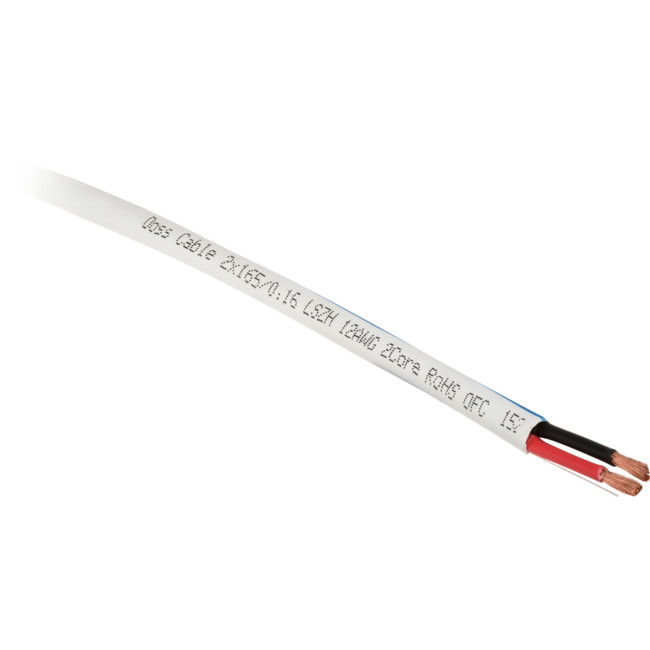12G2C1M 1M 12AWG 2-CORE SPEAKER CABLE
This is the metre code.
If buying by roll please click here
Makes the cable as easy to strip as possible
Ensures premium sound quality in your systems. Higher purity copper means better low level signal transmission and great sound
Specifications
|
Strand count |
165 |
|
Conductor diameter |
0.16 mm |
|
Number of cores |
2 |
|
Conductor material |
Bare copper |
|
Dielectric dimension |
3.4 mm |
|
Dielectric material |
LSZH |
|
Jacket dimension |
8mm |
|
Jacket thickness |
0.6mm |
| Weight | 16.35kg |
|
Jacket material |
LSZH |
Speaker Wire Selection Guide
Speaker wire plays an important role in speaker sound quality and reproduction. All speaker wire has some resistance and, over long runs, can affect audio quality. Not only can it reduce signal levels, but it can also affect the signal in a non-linear fashion, affecting different frequencies different amounts. This effectively changes the frequency response of your audio system in an unpredictable manner.
By following a few simple guidelines, you can reduce this effect without spending a fortune on expensive cable.
Gauge / Diameter
| AWG | Diameter | Suggested DOSS Cable | Max Recommended Run for Front Speakers |
Max Recommended Run for Surround Speakers** |
|||||
|---|---|---|---|---|---|---|---|---|---|
| 4Ω | 6Ω | 8Ω | 4Ω | 6Ω | 8Ω | ||||
| 22 | 0.64 mm | 0.5296 Ω/m | 1.9 m | 2.7 m | 3.6 m | 3.2 m | 4.6 m | 6.1 m | |
| 20 | 0.81 mm | 0.3331 Ω/m | 2X30-.14M | 3.1 m | 4.6 m | 6.1 m | 5.3 m | 7.8 m | 10.4 m |
| 18 | 1.02 mm | 0.2095 Ω/m | 2X41-.16, 4X30-.10 |
4.9 m | 7.3 m | 9.8 m | 8.3 m | 12.4 m | 16.7 m |
| 16 | 1.29 mm | 0.1317 Ω/m | 2X91-.12, 2X96-.12, DOHQ |
7.3 m | 10.9 m | 14.6 m | 12.4 m | 18.5 m | 24.8 m |
| 14 | 1.63 mm | 0.0829 Ω/m | 12.2 m | 18.3 m | 24.4 m | 20.7 m | 31.1 m | 41.5 m | |
| 12 | 2.05 mm | 0.0521 Ω/m | 2X308.12R | 18.3 m | 27.4 m | 36.6 m | 31.1 m | 46.6 m | 62.2 m |
Values for other gauges can be found here: Wikipedia: American wire gauge
** A greater tolerance is allowed for Subwoofers and Surround speakers where accuracy of frequency response is not as critical.
Bi-wire
Instead of running a large gauge wire (ie 10+ AWG), double up lengths of a smaller gauge to double the distance. For example:
- Instead of 10AWG to reach 60m, use two lengths of 12AWG wired in parallel to double the recommended distance
- Use 4-cores of 16AWG to achieve 20m run; 2-cores for (+), 2-cores for (-)
Twist, don’t shield
Any EMI that maybe induced in speaker wires is often below standard noise levels and as such, very little is required to protect the signals from interference. However over longer runs, particularly where speaker wires are run physically parallel with power cables for significant distances, EMI may be an issue. It is recommended to uses twisted wires to reduce EMI as shielding or braiding can create a capacitance component to the dynamic resistance of the cable, undoing all your work in picking the correct gauge wires and affecting the frequency response of your system in a very unpredictable manner.

